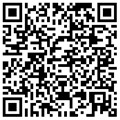-
+关注
私聊
-

tututututu
第34楼2007/02/01
应该是灯泡
再度查看2002/95/EC正文,上述提到地第十条仅仅是未来的工作的对象即在计划当中但是并没有明确被豁免的标示。按照本条中第一款和第三款有后续指令进行更新的方法,可以明确的概念是灯泡并不在RoHS的豁免范围之内,仍然要遵循RoHS的限量标准;另外据我们从荷兰政府了解的状况,对于灯泡泡壳中的含铅量,按照对等的原则可以理解为豁免(即灯泡算是电子元器件的一部分)。love7099 发表:[豁免]关于RoHS豁免条例有一点疑问:第10条最后的light bulbs是应该理解成灯泡是豁免的还是灯泡中的Pb是豁免的?我今天测了一个氖灯泡,Cd 280ppm,不知是否属于豁免范围内。
-
+关注
私聊
-

无名
第37楼2007/02/05
请参考IEC62321原文资料:
Specimens that are too small or very thin may easily violate the condition of minimum sample thickness or mass that shall be present in order for the results to be valid. In such instances a number of small objects of the same kind (for example small screws) should be placed in a sample cup and then only analyzed. Similarly, thin samples of the same kind should be stacked in the pile thick enough to fulfill the minimum sample thickness criterion and analyzed accordingly. As a general rule, all samples shall completely cover the measuring window/area of the spectrometer. The sample should
be at least 5 mm thick in case of polymers and light alloys such as Al, Mg or Ti, minimum of 15 mm thick in case of liquids and about 1 mm thick for all other alloys. The insulation on thin wires and ribbon cables may not be treated as uniform and should be measured by extracting the metal conductor first. On the other hand, almost
all power cords of diameter larger than 5 mm with copper wiring inside, may be treated as uniform for the purpose of insulation analysis. The metal may also be analyzed, after separation. Some metal coatings may be analyzed, if the user knows the construction of the material, and the spectrometer is calibrated to analyze such a
complex layer system. For example, the coatings is known to be SnAgCu (plated over) Copper (plated over) epoxy. The tin alloy may be analyzed, provided the instrument is calibrated for this specific sample type. It is commonly accepted that most XRF instruments will not detect, with sufficient sensitivity, Cr in conversion coatings unless they are at least a few hundred nm in thickness. Due to variations from instrument to instrument of the required sample size, the operator of the spectrometer is advised to always consult the instrument manual or manufacturer for requirements on minimum
size/mass/thickness conditions of the sample.tututututu 发表:大虾还是详细叙述一下吧,我觉得这非常之关键!
-
+关注
私聊
-

jeewah
第38楼2007/02/07
根据英国ERA公司调查结果,灯泡整体是不被豁免的,灯泡外泡体玻璃不含铅,不存在豁免;灯胆玻璃原来是含铅的,现在一般含钡,也不存在豁免;灯泡屁股上高温焊锡属于豁免.因此,灯泡整体没有豁免,但高温焊锡豁免.
tututututu 发表:应该是灯泡
再度查看2002/95/EC正文,上述提到地第十条仅仅是未来的工作的对象即在计划当中但是并没有明确被豁免的标示。按照本条中第一款和第三款有后续指令进行更新的方法,可以明确的概念是灯泡并不在RoHS的豁免范围之内,仍然要遵循RoHS的限量标准;另外据我们从荷兰政府了解的状况,对于灯泡泡壳中的含铅量,按照对等的原则可以理解为豁免(即灯泡算是电子元器件的一部分)。
